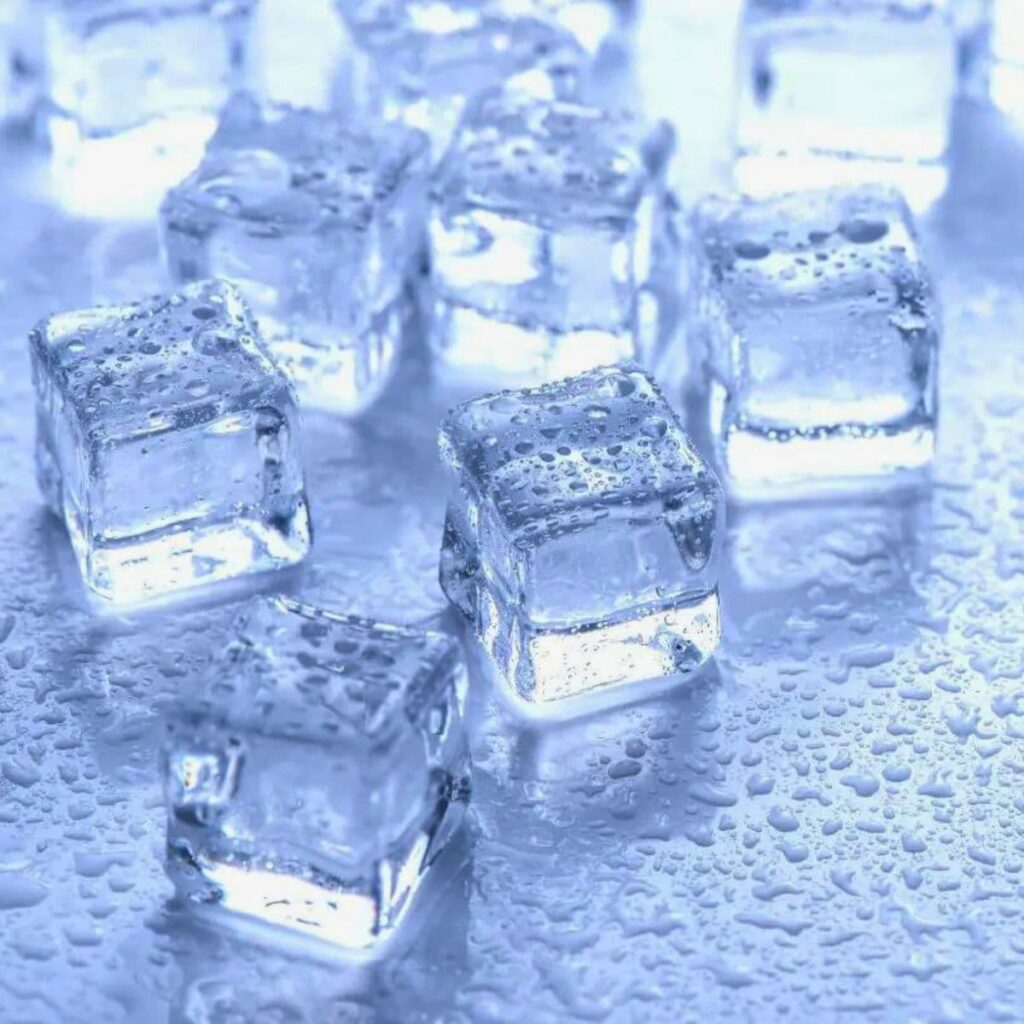Have you ever cleaned out those ice cube trays and instead of dumping them in the sink decided to melt them quickly? I bet you popped the cubes in the microwave to heat them up fast, only to find it didn’t work. So, why doesn’t ice melt in the microwave?
Well, it all has to do with science! Microwaves work to heat things by creating movement within molecules. Ice has a tough crystalline composition that doesn’t let the molecules move around much, so it takes a long time to generate any heat.
Let’s explore that a little further!
You can also learn more about how hot a microwave gets to understand the heating process better.

Why Does My Microwave Not Melt Ice?
Your microwave doesn’t melt ice simply because it requires a lot more power to move the molecules around. If you place a cup of liquid water and a cup of ice side by side in the microwave, the liquid will boil before the cubes start to melt (Source).
In short: if you leave it in there for long enough, eventually you’ll be able to melt the ice. However, you could save the energy and just leave the ice on the counter or in the sink!
Despite being a seeming waste of energy, at least microwaving ice isn’t potentially damaging to your appliance, like what happens when you microwave nothing!
So, I Can’t Microwave Ice to Melt It?
Well, you can technically microwave ice to melt it, but it will take longer than you’d think. Around 3 minutes on high is when you’ll begin to see real results.
Microwaves are most effective on water in its liquid form. As the ice cubes begin to melt, even on their own at room temperature regardless of the microwave, they’ll create some liquid.
The liquid water is highly affected by the microwave, and thus will heat quickly, exponentially helping to melt the remaining ice.
Similarly, when you’re heating a frozen food, the heat is being generated by molecule movement in the food itself, which works to heat up and get rid of the layer of ice.
Then Why Do People Put Ice in the Microwave?
Well, people don’t generally put only ice in the microwave. However, it’s a common practice to add an ice cube to a plate of food you’re reheating. This is because the heat of the food will cause the ice cube to release some water, which then turns to steam.
The steam helps to re-moisturize your food, leaving you a more pleasant texture than day-old, dried out fish! Once the food is heated, you can simply pluck out the ice cube and enjoy.
Ice is used here as an alternative to adding liquid water to begin with. Honestly, I find it’s much more regulatable and yields better results – there’s no guessing how much water to add and not turn things into a soupy mess.
What Happens If I Put an Ice Cube in the Microwave with Rice?
When you put an ice cube in the microwave with rice you’re reheating, it adds that much needed moisture during the cooking process. Instead of coming out with dry, gross rice, you’ll achieve an effect much like the original time you had your rice.
See, rice tends to lose moisture when it’s stored, and releases even more during the reheating process. This loss of water content is what dries things out. By adding an ice cube on top, you’ll create steam, which helps to restore the much-needed liquid.
The rice gets warm enough to cause the ice cube to melt slightly, releasing the perfect amount of water to make your rice a much more palatable texture!
Now, that said, this ice cube trick doesn’t work so well with foods that are already plenty moist on their own. If you add the moisture to something that’s not dried out, you’ll end up with a soggy mess. For example, don’t add ice when making grilled cheese in the microwave.
However, for something lacking moisture, I think the ice cube is a great hack to know!
In Conclusion
Tough hydrogen bonds are the culprit for why ice doesn’t melt in the microwave. However, that trait is actually what makes it a useful kitchen technique sometimes!
By adding ice to food you’re heating which lacks moisture, the ice will melt from the heat of the food, generating the perfect amount of steam. In turn, this prevents your dish from drying out, as microwave reheating so often does.
- Guava Margarita: Easy Guavarita Drink Recipe! - April 22, 2024
- Air Fryer Avocado Egg Rolls (Cheesecake Factory Copycat) - April 21, 2024
- Strawberry Horchata Chai: Dutch Bros Copycat Recipe - April 20, 2024
